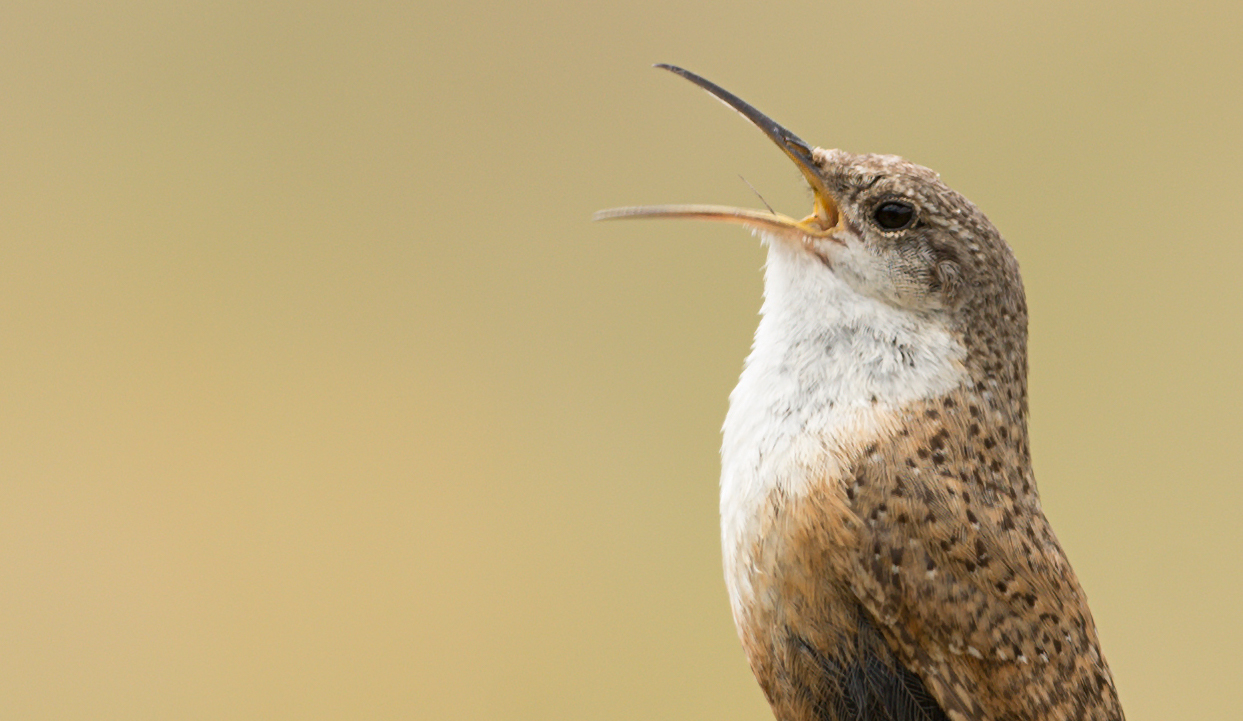Why study female bird song?
Both females and males sing amazingly complex songs in many bird species, but females do not sing at all in others. Why is this? And how and why did songbirds evolve such elaborate songs?
To answer these questions, we need your help to document female bird songs from around the world!

Females sing, too!
Traditionally, bird song has been viewed as primarily a male trait and female song has been thought of as rare and anomalous. Research shows, however, that female song occurs in many songbird species. Also, it likely existed in the ancestors of all modern songbirds. So, female songbirds have been singing for millions of years. It’s time we start listening!
Why this citizen science project?
Bird song is a complex, elaborate trait, like extravagant displays and flashy colors of many animals. Therefore, bird songs offer an excellent opportunity to study the evolutionary pressures that have shaped life on our planet!
To investigate how males and females evolved their diverse songs, we need many examples of male and female song from many different songbirds. But female songs are almost absent in biological collections because most bird song research has focused on male song. By contributing observations and recordings, you are helping answer interesting and important evolutionary questions!
The female bird song backstory
The majority of bird song research has been conducted in temperate climate regions – especially Europe and northern North America. Here, males sing a lot during the breeding season and female song is often reduced or absent. As a consequence, bird song research has focused on male song. However, most of the world’s biodiversity, including songbird biodiversity exists in the tropics. In the tropics, we see a very different pattern: song is common in both males and females. So how did all this bird song diversity evolve?
Many differences exist between tropical and temperate regions. However, extreme differences in seasonal patterns of temperature and resource abundance is one difference that has had pronounced effects on bird behavior. One consequence is that many temperate-breeding songbirds migrate, traveling annually between tropical wintering grounds and temperate breeding grounds.
Upon arriving to their breeding grounds, temperate male songbirds sing their hearts out to claim a territory and attract a mate. Females then choose males with the most elaborate songs. Based on these observations and a lot of experimental research, song in temperate males appears to be sexually selected to become more elaborate over evolutionary time.

In the tropics, however, many bird species live and breed in the same area year-round. They often keep the same mate and territory for the whole year, or even multiple years. Thus, tropical songbirds may sing for many additional socially or naturally selected reasons, such as to mediate social interactions necessary to maintain multipurpose territories or to ensure access to food all year.
So which selection pressures have led to the diversity of bird songs we see today? To understand this, we need songs for as many species as possible. Then we can compare differences in male and female song to a variety of ecological factors. Specifically, we can compare changes in male and female song structure to changes in potential key factors (while accounting for how songbird species are related). This will reveal which factors have shaped changes in bird song complexity throughout songbird evolutionary history.
Listen to female and male songs
Explore the diversity of female and male bird songs below!

Northern Cardinal
Range: primarily eastern North America.
Recordings from Xeno-canto by Paul Marvin (female: XC169226; male: XC165346).
Canyon Wren
Range: western North America.
Songs courtesy of Lauryn Benedict, University of Northern Colorado, USA.
Adelaide’s Warbler
Range: endemic to Puerto Rico.
Songs courtesy of David Logue, University of Lethbridge, Alberta, Canada.
Black-bellied wren
Range: Costa Rica, Panama, and Colombia.
Songs courtesy of David Logue, University of Lethbridge, Alberta, Canada.
Alpine Accentor
Range: Europe and Asia.
Songs courtesy of Naomi Langmore, Australian National University, Canberra, Australia.
Venezuelan Troupial
Range: northern South America and the Caribbean.
Recorded by Karan Odom in Puerto Rico.
Magpie-lark
Range: Australia.
Songs courtesy of Michelle Hall, University of Melbourne, Australia.
Rufous-and-white Wren
Range: southern Mexico to northern South America.
Songs courtesy of Dan Mennill, University of Windsor, Ontario, Canada
Superb Fairy-wren
Range: southeastern Australia.
Songs courtesy of Kristal Cain, University of Auckland, New Zealand.
What is bird song?
Songbirds (Passeri or oscines, ~ 5000 species) are named for their complex and often beautiful combinations of notes, called bird song. Each songbird species sings a song or a repertoire of songs different from other species, resulting in an impressive diversity of bird songs. These species-specific songs help birds identify appropriate mates and mediate social interactions and they allow bird-watchers to identify hundreds of species in a single region just by hearing their songs!
Photo by Frode Jacobsen
Songs versus calls
Avian vocalizations are traditionally classified as either “songs” or “calls.” This distinction is based both on structure and function. Song normally consists of sequences of elements and syllables. Distinct syllable combinations are referred to as song types, and the full range of songs and syllables that a bird sings is its repertoire. Calls are normally relatively short (a single element or syllable) and used in specific contexts, but are not usually season-specific. Examples of calls include alarm calls, begging calls, and contact calls. Songs, in contrast, are generally more complex than calls, are associated with mate attraction and territory defense, and tend to occur more or only during the breeding season. One additional intriguing fact is that songbird songs are learned. Some calls are also learned, but many seem to develop without learning (but this is a lot less studied). Because of this vocal learning, we often find distinct variation in song among locations and populations (e.g., dialects). This geographic variation is important to keep in mind and can be valuable to capture when recording birds.
Our current project is focused on female song in songbirds (here are lists of species for which we need female song). Nevertheless, we encourage documenting all interesting female vocalizations (calls and songs) of all birds for biological collections.
Interested in learning more?
Here are some references you may be able to locate online or at your local library:
Langmore, N.E. 1998. Functions of duet and solo songs of female birds. Trends in Ecology and Evolution 13: 136-140.
Riebel, K. 2003. The “mute” sex revisited: Vocal production and perception learning in female songbirds. Advances in the Study of Behavior 33: 49-86.
Hall, M.L. 2004. A review of hypotheses for the functions of avian duetting. Behavioral Ecology and Sociobiology 55: 415-430.
Slater, P.J.B. and Mann, N.I. 2004. Why do the females of many bird species sing in the tropics? Journal of Avian Biology 35: 289-294.
Riebel, K., Hall, M.L., Langmore, N.E. 2005. Female songbirds still struggling to be heard. Trends in Ecology and Evolution 20: 419-420.

